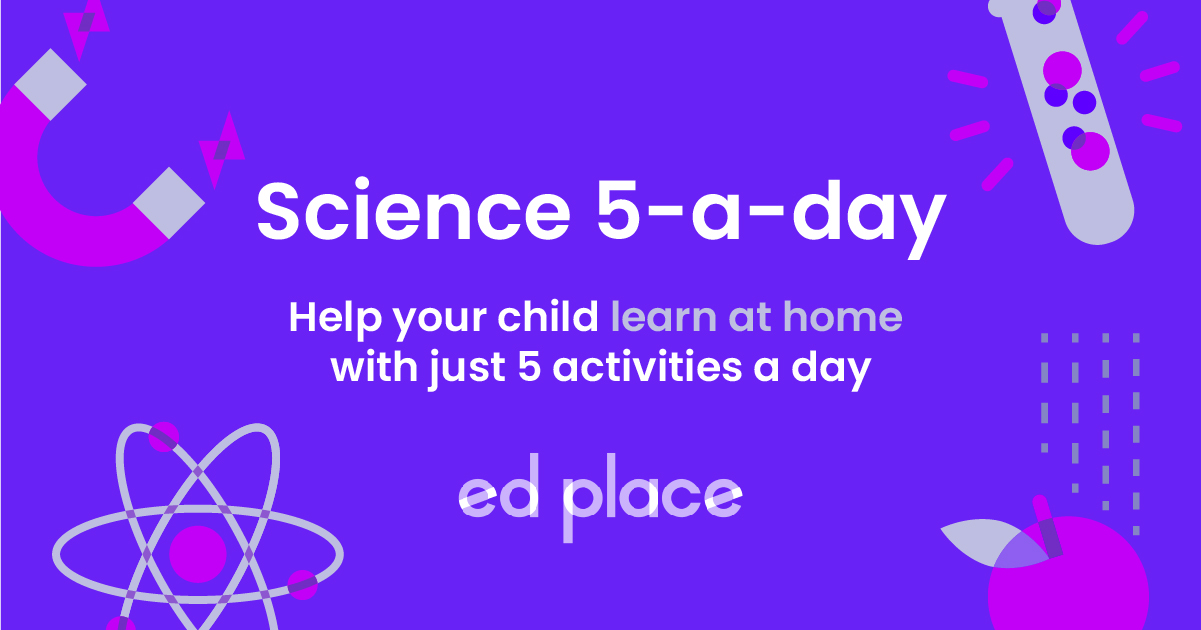
EdPlace's Key Stage 2 home learning science lesson: Forces
Looking for short lessons to keep your child engaged and learning? Our experienced team of teachers have created English, maths and science lessons for the home, so your child can learn no matter where they are. And, as all activities are self-marked, you really can encourage your child to be an independent learner.
Get them started on the lesson below and then jump into our teacher-created activities to practice what they've learnt. We've recommended five to ensure they feel secure in their knowledge - 5-a-day helps keeps the learning loss at bay (or so we think!).
Are they keen to start practising straight away? Head to the bottom of the page to find the activities.
Now...onto the lesson!
When it comes to friction and being resistant, you don’t have to force the issue.
Forces are an integral part of everyday life, and we simply couldn’t live without them. However, when it comes to seeing how forces interact it can be very confusing. We aim to break down your child’s resistance to finding out about forces and oil the wheels of understanding so that the subject ceases to be a great weight.
At EdPlace we’re surrounded by a team of experts who communicate these concepts with children on a day-to-day basis, and we’re ready to share their teaching gems with you. Follow the step-by-step approach below to make this problem half as tricky!
We're confident that if you follow the step-by-step approach below your child will be able to:
1) Understand how friction arises between surfaces and what effect that has.
2) Apply this understanding to real-life examples
3) Explain their understanding back to you, if they've really cracked it!
Step 1- Key Terminology
It’s important to understand that forces are two-way things. If you’re sitting on a chair, that’s gravity holding you down. Is that it? How come you don’t keep falling towards the centre of the Earth, then? Something must be stopping you. The chair? Must be. That means that if there’s a force pulling you down, and you’re not moving, then there has to be a force holding you up – it’s the chair! The chair must be providing an upward force against you to balance your downward force caused by gravity. If you put a balloon between you and the chair, you’ll see those two forces as the balloon starts to squash!
Words we’ll come across regularly include:
Friction = this is a force that occurs between two surfaces that are touching each other.
Lubricate = reducing the friction between surfaces to make movement easier.
Grip = increasing the friction between surfaces.
So, friction between surfaces are all two-way forces and we’ll try to de-mystify the issue and break down any resistance to getting them sorted out.
Step 2 - Why does Friction exist?
Friction has to exist between two surfaces otherwise movement would be impossible. Imagine trainers with zero grip – you couldn’t walk at all! However, sometimes it’s important to either increase or decrease friction depending on what you need to do. Ski-ing wouldn’t be a lot of fun unless the amount of friction was small – so we use smooth surfaces and lubricants to minimise the friction and whizz down the slope.
Step 3 - Friction Explained
So, first off we have to understand that friction is an important force between surfaces – without it nothing could move. Sometimes we want more friction, sometimes we want less – just depends. Imagine these situations:
Running down the path away from a fierce dog – you want maximum friction between trainers and path to provide the grip so that your pushing force against the ground creates a lot of friction and helps you to keep running.
Sledging down a snowy slope – you want a small force of friction between the sledge and the snow (very little grip) so that there’s less resistance to you whizzing down the slope. Mind you, no friction at all would be a bad thing as you couldn’t stop!
Cornering fast on your bike – you need grippy tyres so that’s there’s lots of friction between you and the road, so that your bike’s tyres stay in contact with the road surface. Too little friction, and what happens – your tyres lose contact with the road, slide and come into contact with the road surface and it jolly well hurts!
Remember, friction is a force that exists between two surfaces that are touching each other (feet/ground; boat/water; skate/ice) and it acts both ways, e.g. you start the race, push against the ground with your trainers and the ground “pushes” back at you so that you can move forward. We can change the amount of friction depending on whether we want to go faster or slower, by things like using grippy materials or lubricants, like oil and polish.
Step 4 - More or Less Friction?
OK, time to check out whether this makes more sense – first of all simply decide in each situation whether you want more friction or less. That simple.
1. Skating on an ice rink.
2. Pushing the washing machine back into place.
3. Rubbing a match across a matchbox.
4. The car’s tyres on the road surface.
5. Going down the slide at the park.
Next, let’s look at how we can increase or decrease the friction – what will we use?
6. Running faster – should you use rubber or grease?
7. Speedboat hulls to go fast – should you polish them or roughen them with sandpaper?
8. Whizzing your toy car across the floor – polished floor or carpet to go furthest?
9. Pulling your bike’s brakes – rubber brakes or metal brakes work best?
10. Ski-ing down the slope quickly – roughen or polish your skis?
Step 5 - Have a go yourself!
Now, you’ve had some practice, why not assign your child the following five activities in this order.
All activities are created by teachers and automatically marked. Plus, with an EdPlace subscription, we can automatically progress your child at a level tailored to their needs. Sending you progress reports along the way so you can track and measure progress, together - brilliant!
Activity 1 - Friction and Surface Area
Activity 3 - Forces in Everyday Life
Activity 5 - Investigating Toy Cars
Answers
Did you sort out wanting more/less friction and what you need to do to change things?
1. Less friction – to move as quickly as possible.
2. Less friction – to move the washing machine easily.
3. More friction – to create rubbing (and heat) between match and box.
4. More friction – so the tyres grip the road.
5. Less friction – so you whizz down the slide (but enough so you stop!).
6. Running faster – rubber gives you more friction/’grip’ to push against the ground.
7. Polish the hull to give a smooth surface = less friction = more speed.
8. Cars will go further on a polished floor – less friction between tyres and floor.
9. Bike brakes are rubber to increase friction and stop the bike quickly.
10. Fast ski-ing = less friction = polished skis.
Keep going! Looking for more activities, different subjects or year groups?
Click the button below to view the EdPlace English, maths, science and 11+ activity library








